Greenhouse tomatoes appear much earlier than ground tomatoes, and the number of such fruits will be at least twice as large. Technology growing tomatoes in the greenhouse and in the open field is somewhat different. In order to get a good harvest of greenhouse tomatoes, you need to know some of the secrets and features of this process.
What are the rules for growing tomatoes in greenhouses, how to care for greenhouse tomatoes, what fertilizers to feed and how often to water - this is what this article will be about.
Growing a tomato in a greenhouse in stages
Having decided to grow tomatoes in a greenhouse, the gardener should know some of the nuances. For instance:
- greenhouse tomatoes are more likely to get sick with fungal infections, so disinfection should come first;
- only parthenocarpic or self-pollinated varieties that do not need pollinating insects should be planted in greenhouses and greenhouses;
- if tomatoes in need of pollination were selected for planting in the greenhouse, you need to engage in attracting bees to the greenhouse or do manual pollination with a brush, for example;
- it is necessary to constantly monitor the temperature and humidity inside the greenhouse, because tomatoes love the following conditions: 23-30 degrees and 60-70% humidity;
- regular ventilation is mandatory, therefore, when building a greenhouse, you should take care of a sufficient number of vents or equip a forced ventilation system;
- growing tall tomatoes in a greenhouse will require supports or rods to which plant stems can be tied;
- planting tomatoes in a closed greenhouse should never thicken, as this significantly increases the risk of fungal infections and rot on tomatoes.
After the greenhouse is built, you can proceed directly to growing tomatoes in the greenhouse. This process should consist of several mandatory steps:
- Purchase of planting material or growing tomato seedlings on your own.
- Preparing the soil and the greenhouse itself for planting tomatoes.
- Transferring tomato seedlings to a greenhouse.
- Pollination of tomatoes (if necessary).
- Tying tomatoes to supports and forming bushes.
- Watering and feeding tomatoes.
- Harvesting and storage.
Sowing tomato seeds for seedlings
Outwardly, greenhouse tomatoes are indistinguishable from ground ones: absolutely any varieties of tomatoes can be grown in a greenhouse. But anyway selected and special tomatoes, designed specifically for greenhouses... Such varieties have a number of features:
- are immune to fungal infections;
- do not need pollination;
- love warmth and humidity;
- most greenhouse tomatoes belong to the group of indeterminate varieties, that is, tall;
- are distinguished by increased productivity.
Having decided on the variety of tomatoes for your greenhouse, you can go for seeds. If tomato seeds are selected, enclosed in colored capsules, additional treatment they will not be needed before sowing - the capsule already contains all the substances necessary for normal and rapid development.
Untreated seeds will need to be prepared for sowing seedlings:
- Treat with an antiseptic (for example, soak in a weak solution of potassium permarganate).
- Germinate by covering with a damp cloth and placing in a warm place.
- Harden by placing the sprouted tomato seeds in the refrigerator for a couple of days.
- Soak tomato seeds for several hours in a growth stimulator or in a complex mineral fertilizer.
The seeds can now be planted in the prepared substrate. The soil for tomato seedlings should be slightly acidic, loose, retaining moisture well and allowing air to pass through. A mixture of equal parts of such ingredients is suitable: peat, turf soil, humus.
You can add a liter can of coarse river sand and the same amount of wood ash to the mixed soil. Now the earth needs to be disinfected, for this you can freeze it on the street (if the temperature is below freezing there) or hold it for about 30 minutes in the oven (you can use it in the microwave).
A solution of potassium permarganate is considered a good antiseptic - it is simply poured over the ground laid in a container. By the way, containers for tomato seedlings should be shallow - about 5-7 cm high. So, the root system can develop normally.
At the bottom of each pot or box for tomato seedlings, drainage from pebbles, bark or gravel is laid. Pour the substrate on top and tamp it a little. Now they make depressions and place the germinated prepared tomato seeds in them. The seeds are covered with a thin layer of fine soil and sprayed with warm water from a spray bottle.
Containers with tomato seedlings are covered with glass or foil and placed in a very warm place - there they will be there until green sprouts appear.
As soon as tomato loops begin to appear from under the ground, the shelter is removed, and the containers with seedlings are placed on the windowsill or in another bright and warm place.
Tomato seedling care
Like regular seedlings, greenhouse tomatoes need to be watered regularly. This is done at first only with a spray bottle, when the plants get stronger, you can use a small watering can or a mug. Water can wash out the roots of plants - this must be remembered.
At the stage of appearance of two or three true leaves, tomato seedlings dive - transplanted into larger containers. Diving also helps the tomatoes prepare for future transplantation into the ground; at this stage, you can also control the length of the stems, and form the root system.
After diving, you can slightly lower the temperature - it can be 18-23 degrees. It is not worth feeding tomato seedlings, it is better to apply fertilizers when the tomatoes are transplanted into the greenhouse and undergo the acclimatization process.
Tomatoes in the greenhouse will be healthier if they are taken outside or on the balcony a couple of weeks before transplanting (you can leave the seedlings daily for several hours in the same greenhouse).
Transplanting tomato seedlings into a greenhouse
Tomato seedlings are ready for transplanting into the greenhouse when the stems have reached 18-25 cm in height, there are 7-8 true leaves on the plants, the first inflorescences begin to appear, but there are no ovaries yet.
Until this moment, the ground in the greenhouse should also warm up - the soil temperature at a depth of 10 cm should be at least 12 degrees. If you plant tomatoes in too cold soil, the development of plants will stop, later they may die altogether, or this will affect the yield of tomatoes. On the day of transplant, the weather should not be too hot, it is good if it is cloudy or rainy outside.
You can speed up the warming up of the soil using black plastic wrap. They simply cover the ground in the greenhouse with it until they reach the desired temperature. As a last resort, you can use hot water to water the wells before planting the tomato.
Before this, the walls and structures of the greenhouse must be thoroughly washed and treated with an antiseptic. It is recommended to use a new soil every year, but you can simply disinfect it.
Top dressing of the earth before planting tomato seedlings is mandatory - for this, superphosphate and potash fertilizers are used. Peat, humus or rotted sawdust will help to loosen the soil, the amount of such additives should be about a bucket per square meter. When everything is ready, make holes for tomato seedlings.
The scheme for planting tomatoes in a greenhouse, of course, depends on the type of plant and variety. So:
- undersized early-ripening tomatoes are planted in the greenhouse in two rows, observing the staggered order of the holes. The distance between adjacent tomatoes should be 35-40 cm, at least 55 cm is left between the rows.
- Low-growing (determinant) and standard varieties of tomatoes, which are usually grown in one stem, can be planted a little denser: between bushes 30 cm, rows at a distance of half a meter from each other.
- Indeterminate tomatoes are also planted in a checkerboard pattern. An interval of 80 cm is observed between the rows, the distance between adjacent bushes should be at least 70 cm.
The most important thing is that the tomato plantings do not thicken. If this trend is observed, it is necessary to deal with the removal of side shoots. But there should not be too much distance between the tomato bushes, otherwise the plants will begin to fall.
The process of planting a tomato is no different from planting seedlings in the ground: about a liter of warm water is poured into the hole, the seedlings are taken out of the pot, the roots are straightened and placed in place, covered with earth and lightly tamped.
Do not deepen the seedlings too deep, this will lead to the formation of lateral roots, which will slow down the growth of plants. Only overgrown tomatoes can be planted a little deeper, but it is better not to allow this.
Experienced gardeners recommend removing cotyledon leaves before planting tomatoes in a greenhouse... Do the same with yellowed or damaged leaves.
For 10-12 days after transplanting into the greenhouse, the tomatoes are not touched: at this time they are acclimatized, so it is not worthwhile to water or fertilize the seedlings in the greenhouse yet.
Tying and pinching tomatoes in the greenhouse
Two weeks after planting the seedlings in the greenhouse, you can start tying the stems. Tall tomatoes in the greenhouse need to be tied up unambiguously, usually for this they use trellises with a height of about 180-200 cm. With low-growing varieties, everything is much simpler - their stems do not need to be tied up (only when there are too many fruits on the bushes, it is better to install supports after all).
For tying, you should use a thread that is not too thin, otherwise the stems of the tomato may be cut. It is better to use bandages or thin strips of cotton for this.The free end of the rope is tied around the bottom of the bush and carefully wrapped around the entire stem. As the tomatoes develop, the stems are tied up additionally.
Grasshopping - the formation of a bush by breaking off unnecessary shoots. This procedure is also not performed with all varieties of tomatoes, for example, standard tomatoes already give a few lateral shoots, the bush itself is compact and not spreading.
In other cases, it is necessary to regularly remove stepchildren in order to prevent the formation of an excessive number of ovaries - this will deplete the plants and reduce yields.
Tomato bushes are formed into one, two or three stems. In the case when only one stem is left, it turns out to collect the earliest harvest, but there will be few fruits, because only 4-5 brushes will remain.
Therefore, most often tomatoes are formed into two or three stems - so the yield will be high, and the fruits will ripen early enough... 7-8 brushes are left on each stem, all other shoots must be removed until their length has reached more than five centimeters.
Pollination of a tomato in a greenhouse
As mentioned above, not all tomato varieties need pollination - for a greenhouse, it is better to use insect-free tomatoes. But many gardeners note a more pronounced taste and aroma in the varieties that require pollination.
In this case you will have to seriously tinker with greenhouse tomatoes:
- One of the options is to install the evidence with bees directly in the greenhouse. This should be done only at the stage of flowering bushes. But this method is good only for summer residents who are engaged in breeding bees.
- Another method is suitable for those who live next to the apiary or have a beekeeper neighbor: you need to attract beneficial insects to the greenhouse. For this purpose, fragrant flowers are planted at the entrance to the greenhouse; in the greenhouse itself, you can place small containers with sweet syrup or sprinkle tomato bushes with this solution.
- For some tomato varieties, intensive airing of the greenhouse is sufficient: this is how the pollen is transferred from flower to flower by a stream of air. During the flowering phase in the greenhouse, you need to open all the vents and doors to create a draft. Before this procedure, you need to reduce the humidity in the greenhouse, again, using ventilation and stopping watering. The pollen should be crumbly and dry. But the irrigation of the bushes with the help of a sprayer will help to consolidate the result - this will help the pollen to germinate on the pistils of flowers.
- The most time consuming method is to transfer the pollen by hand with a paintbrush. This option will suit summer residents who have small greenhouses with several dozen plants.
Watering and feeding tomatoes
Greenhouse maintenance consists of feeding and watering tomatoes.
Watering tomatoes is rarely necessary, but abundant - this rule applies to both soil and greenhouse plants. High humidity is destructive for tomatoes, especially in a closed greenhouse. This provokes the development of fungal infections, which can lead to the loss of the entire crop.
To prevent such a situation, you should remove the lower leaves, monitor the thickening of the plantings, and regularly ventilate the greenhouse. And the main thing is to water the tomatoes only at the root, not allowing the stems and leaves to get wet. Drip irrigation of tomatoes in greenhouses is very effective, therefore, if possible, this system should be installed without fail.
Greenhouse tomatoes should be watered no more than twice a week. The amount of water for each bush changes depending on the phase of plant development: at first, watering should be more abundant, and by the phase of formation of ovaries and ripening of fruits, the amount of water should be gradually reduced.If this is not done, the fruits will crack, and the plants themselves may get sick with late blight or other infection.
For the entire growing season, tomatoes are fed at least three times. The feeding schedule is approximately as follows:
- The first feeding is carried out three weeks after planting the seedlings in the ground. At this stage, plants need nitrogen. Therefore, they take nitroammofoska and a liquid mullein, dilute them in water and pour a liter of such a solution under each tomato bush.
- After another 10 days, the tomatoes need to be fed with a complex mineral fertilizer. The composition "Fertility" is effective, to which you can add a little potash fertilizers.
- Two weeks after the second feeding, the next stage is started. For this they take superphosphate, wood ash or sodium humate with nitrophos. The components are dissolved in water, about five liters of the composition should be poured for each square meter.
It is very important not to overdo it with nitrogen fertilizers, because their excess will only lead to an increase in green mass - the yield will not increase from this. To understand what tomatoes are missing, one should observe the color of the leaves and the general condition of the plants.
Another essential component of care is airing. Tomatoes are not afraid of drafts, so you can ventilate the greenhouse in any way. Windows and doors must be opened for at least a couple of hours after each watering. In addition, the greenhouse is daily ventilated in extremely hot weather, or when the temperature "overboard" rises above 23 degrees. At night, the greenhouse should be about 16-18 degrees Celsius.
Harvesting and storage
In a greenhouse, growing a tomato takes 1.5-2 months. During this time, the fruits have time to ripen and turn red. This means it's time to start harvesting.
Tips for growing and picking tomatoes in a greenhouse are as follows:
- in heated greenhouses, fruits can ripen in spring - in this case, ripe tomatoes are harvested every two to three days. In the summer-autumn period, harvesting will have to be done every day.
- It is necessary to pick the fruits so that the stalks remain on the bushes.
- Tomatoes are put in small boxes, in several layers, so that the fruits are not crumpled or crushed.
- You can pick tomatoes both pink and red: unripe fruits will just have time to ripen if they are supposed to be transported for a long time.
- If you pick tomatoes unripe, you can increase the yield, because the neighboring tomatoes will pour faster and more abundantly.
- Tomatoes folded in several layers are recommended to be interspersed with soft layers of peat, hay or sawdust.
- If you need to keep the fruits for a long time, each tomato should be wrapped in soft paper.
- It is better to harvest early in the morning or wait until evening.
Let's summarize
Growing and caring for tomatoes in a greenhouse is not much different from cultivating this crop in the open field. In order to achieve high yields, you will have to follow the rules of tomato agricultural technology and thoroughly understand the peculiarities of a capricious culture.
Tomatoes grown in a greenhouse can be no worse, if not better, than garden relatives. An excellent taste and standard smell are sure to be present if the watering rules were followed, the necessary fertilizers were applied, and normal pollination of the flowers took place.
Video about growing tomatoes in the greenhouse will help you figure out the remaining subtleties and understand all the nuances of this difficult matter:
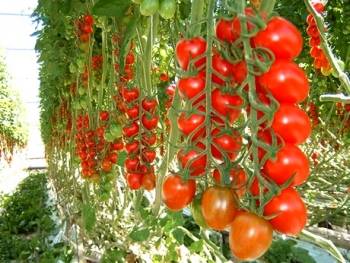
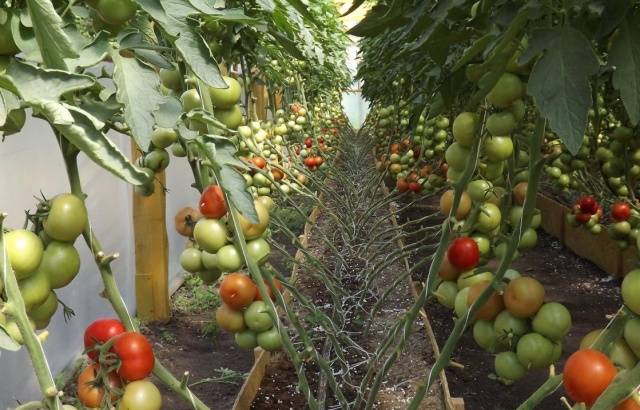

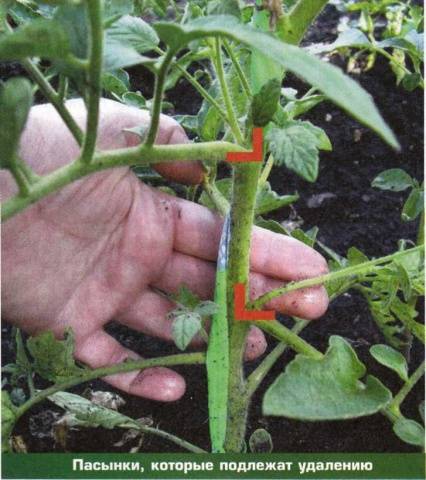

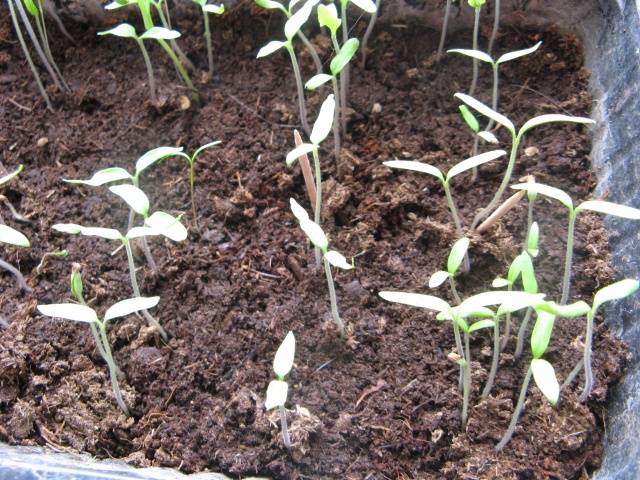
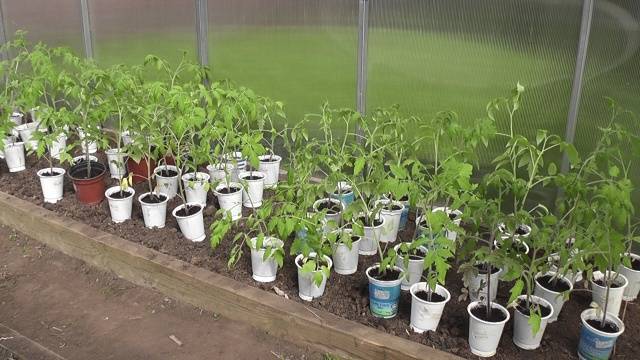
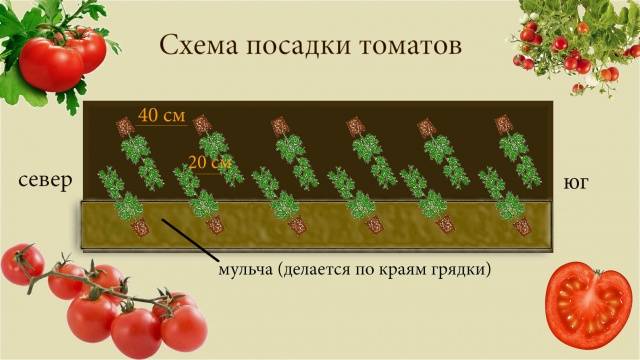
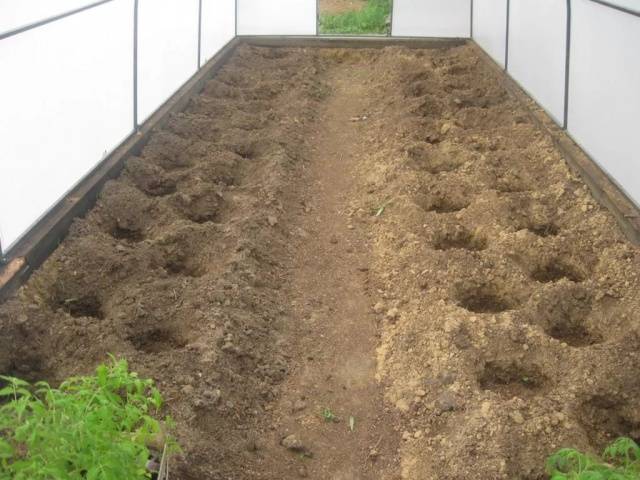
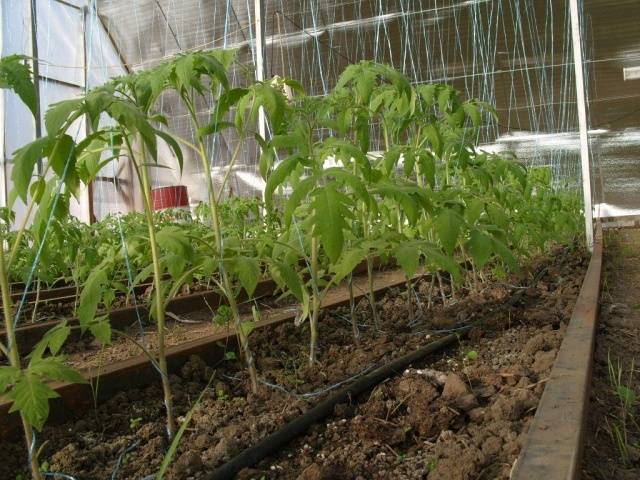
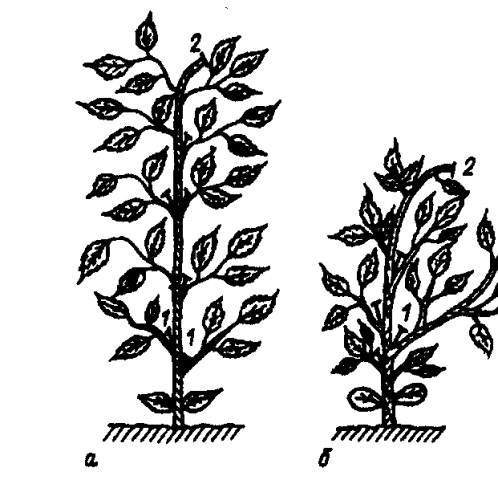
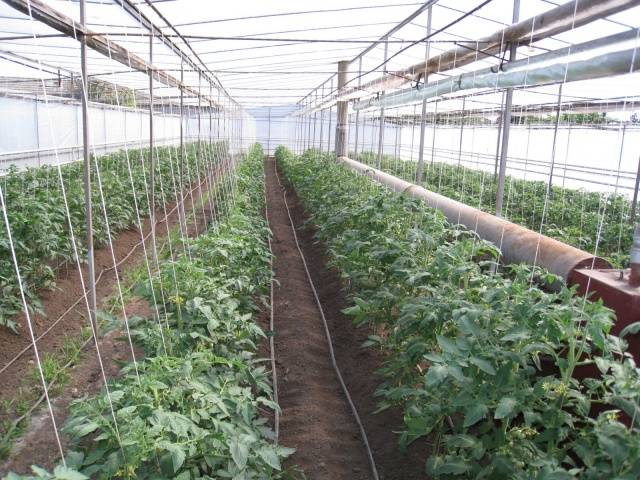
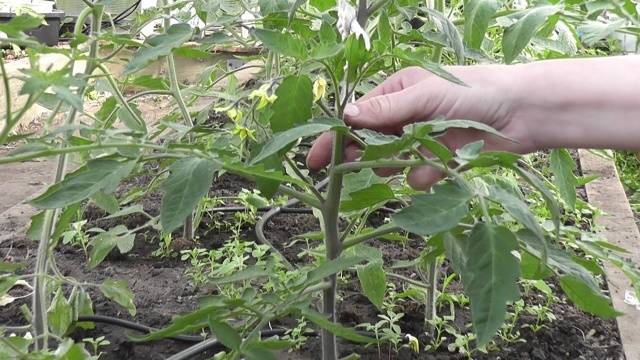
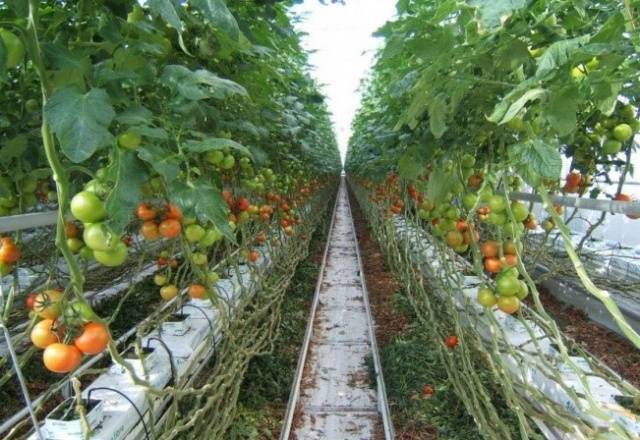
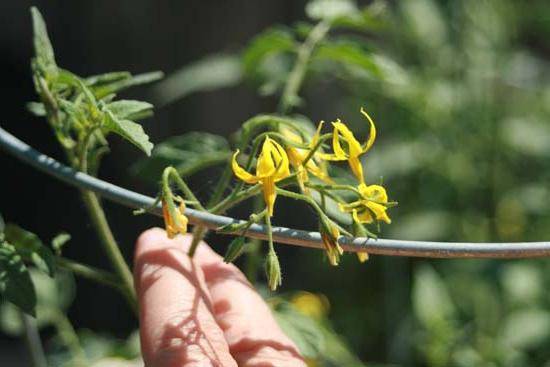
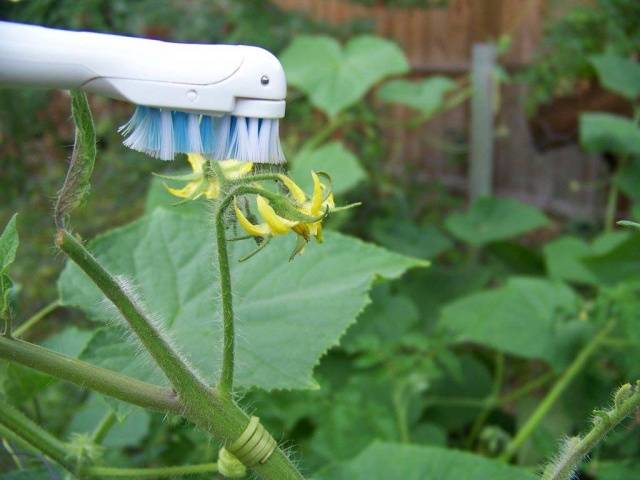
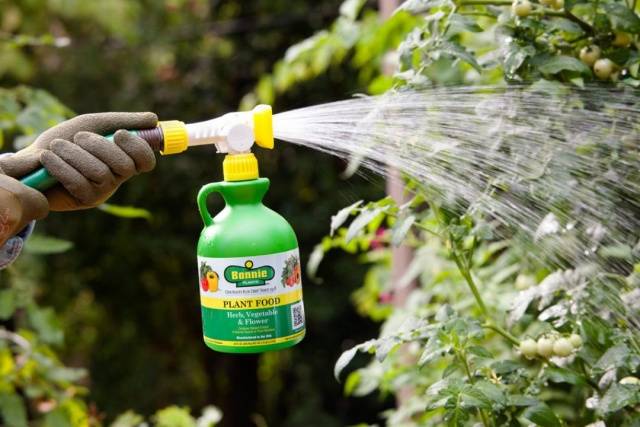
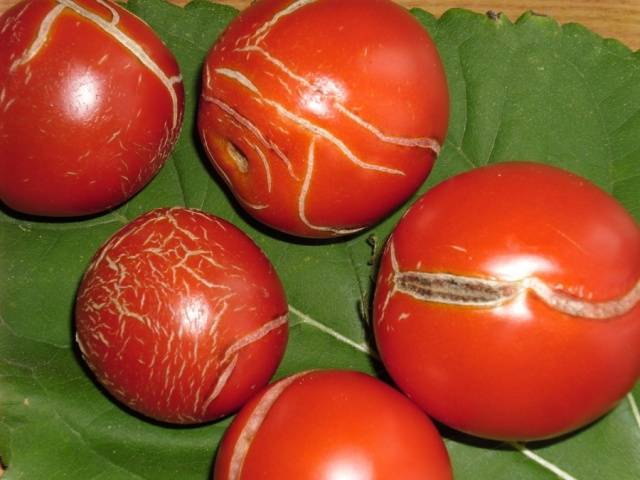
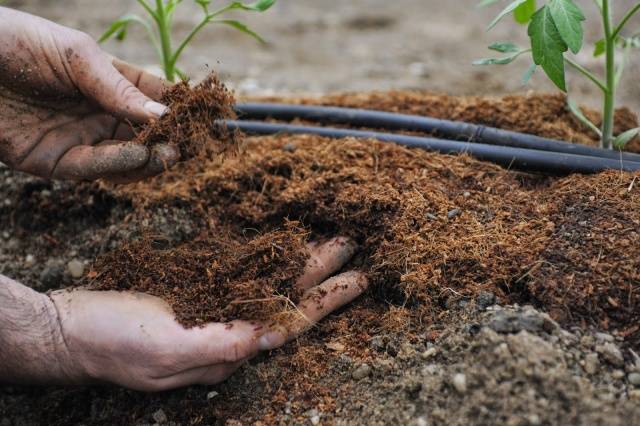
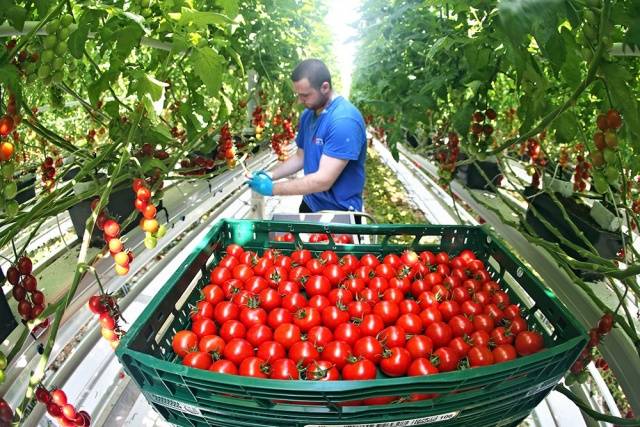
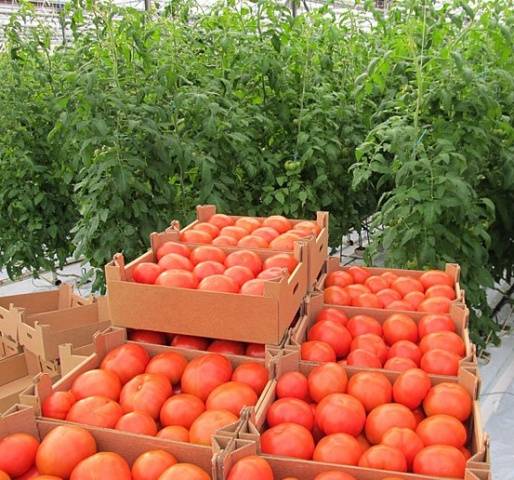
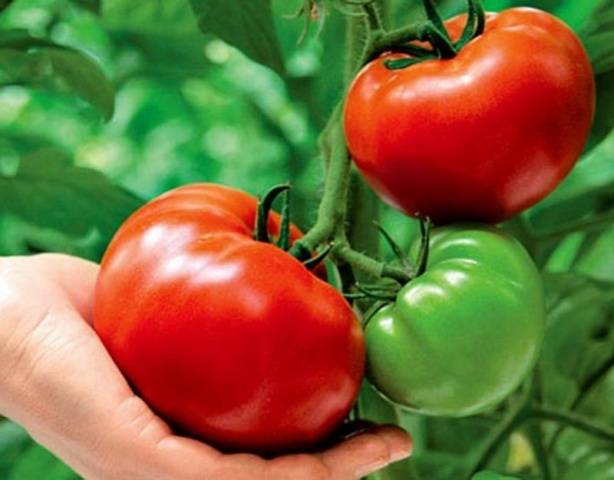





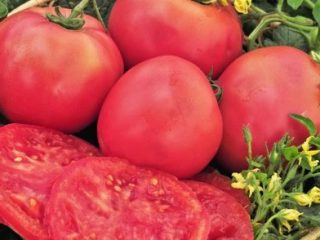


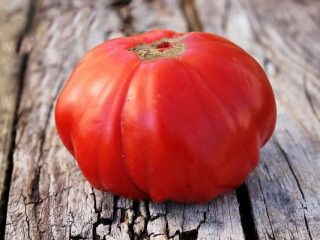
Leaf coagulation. Two weeks have passed since planting the greenhouse